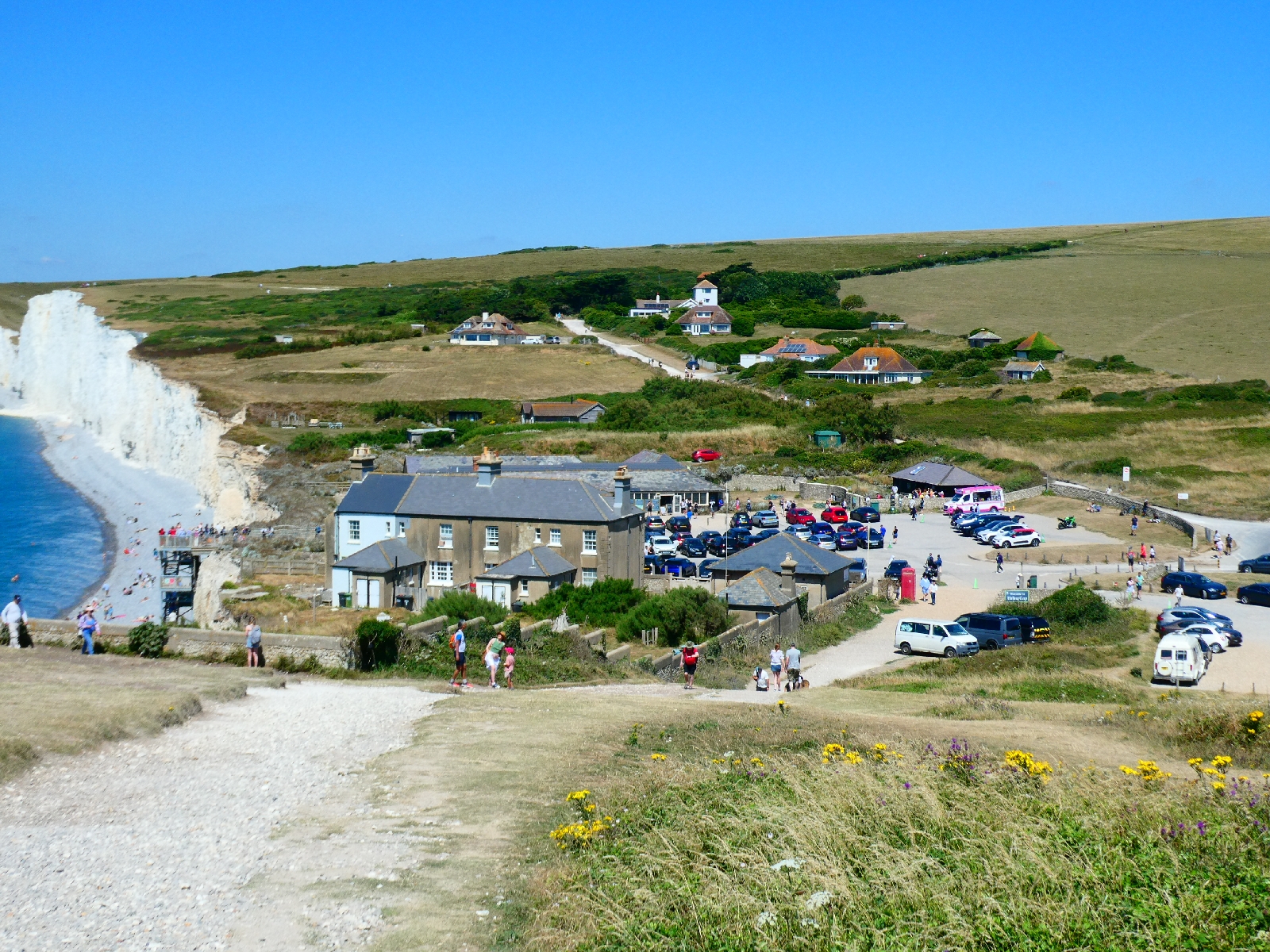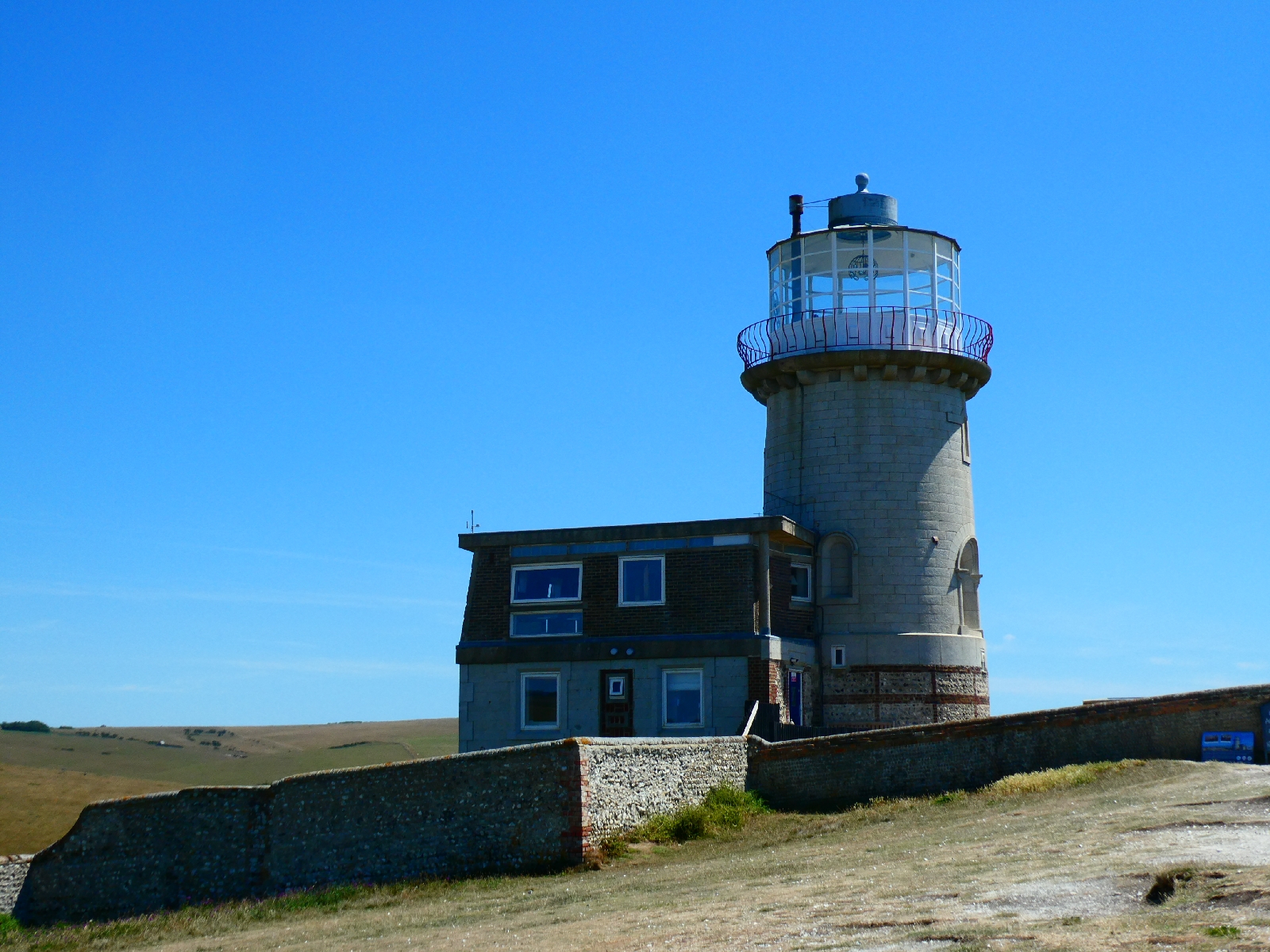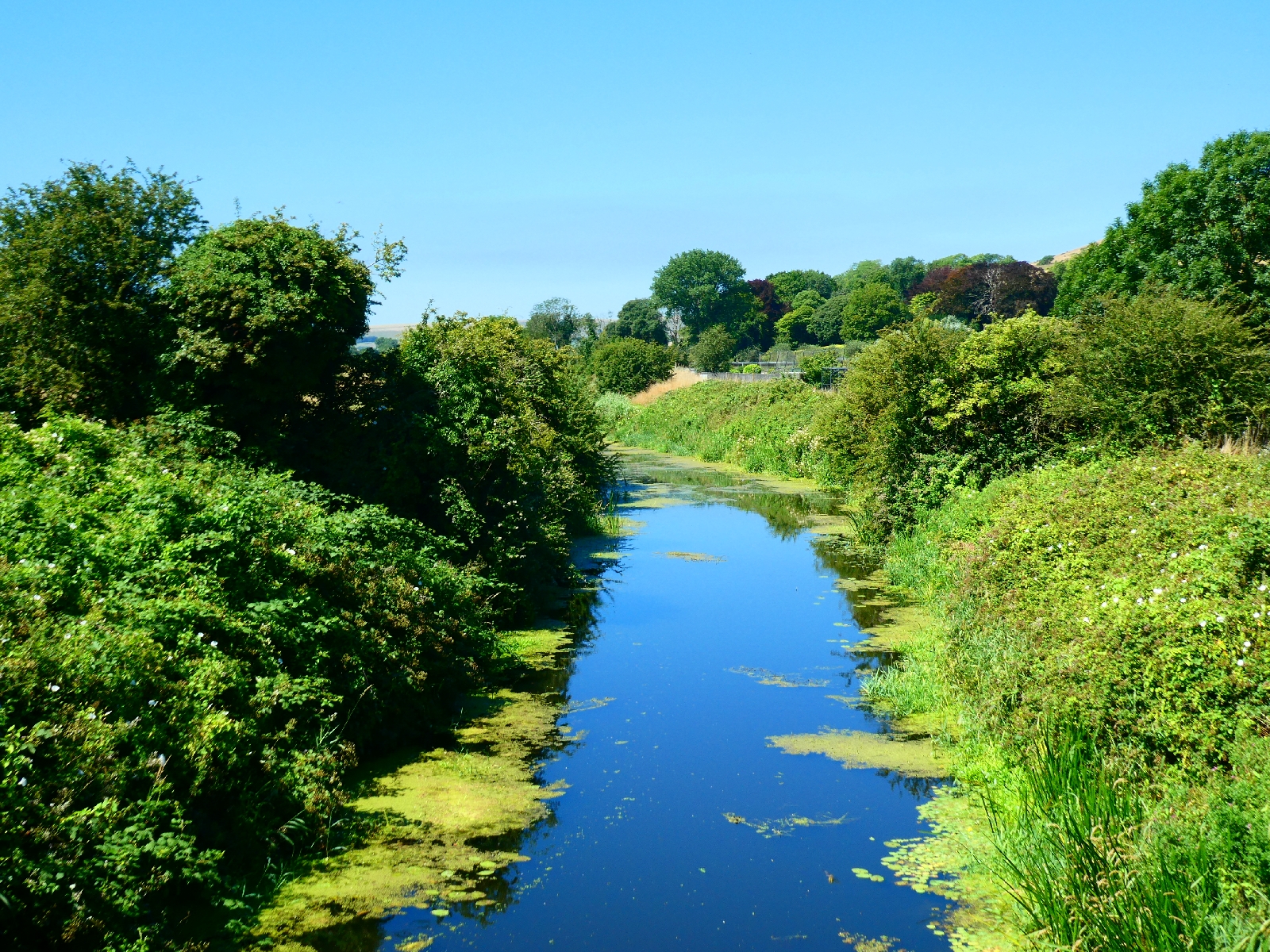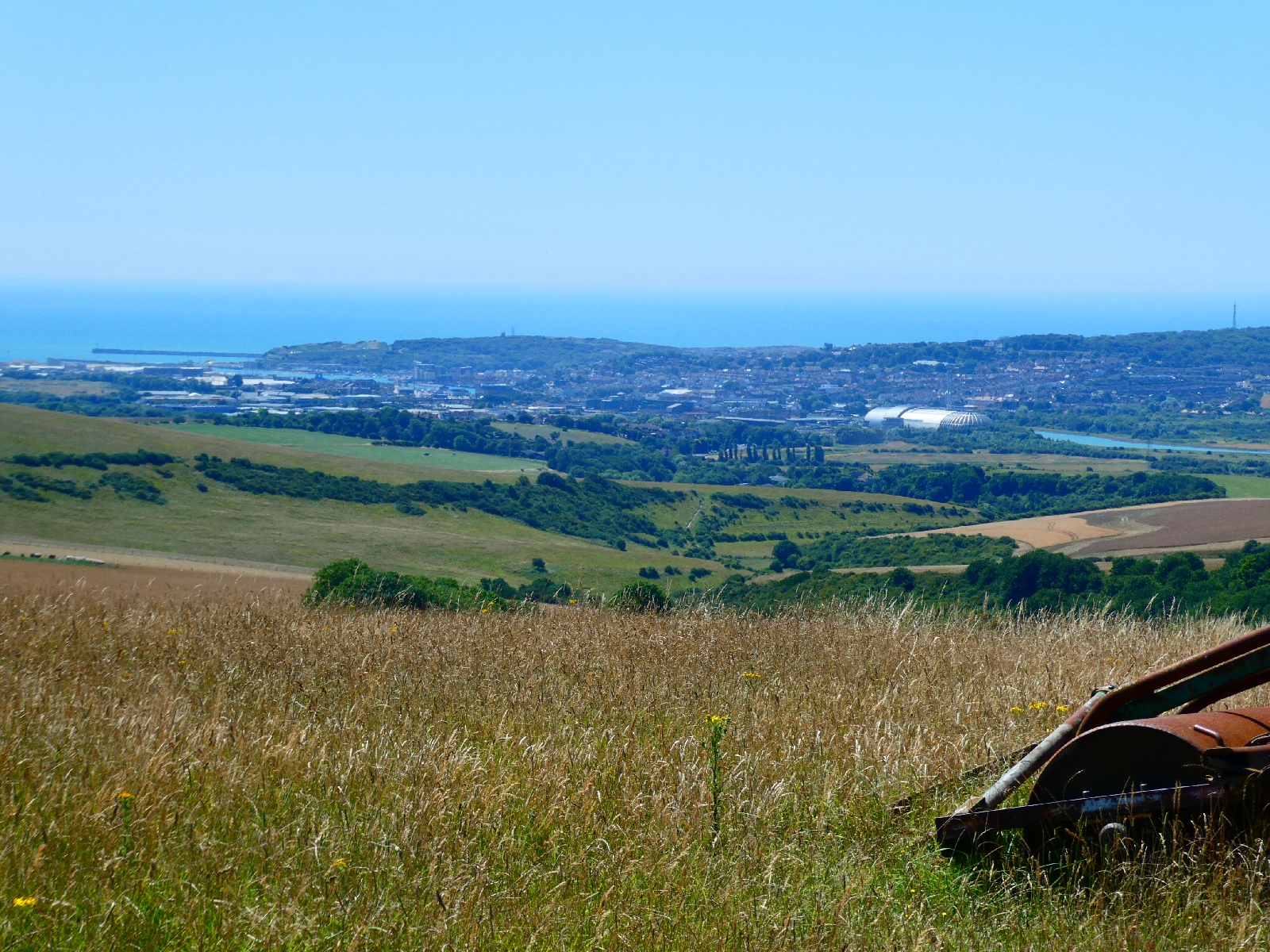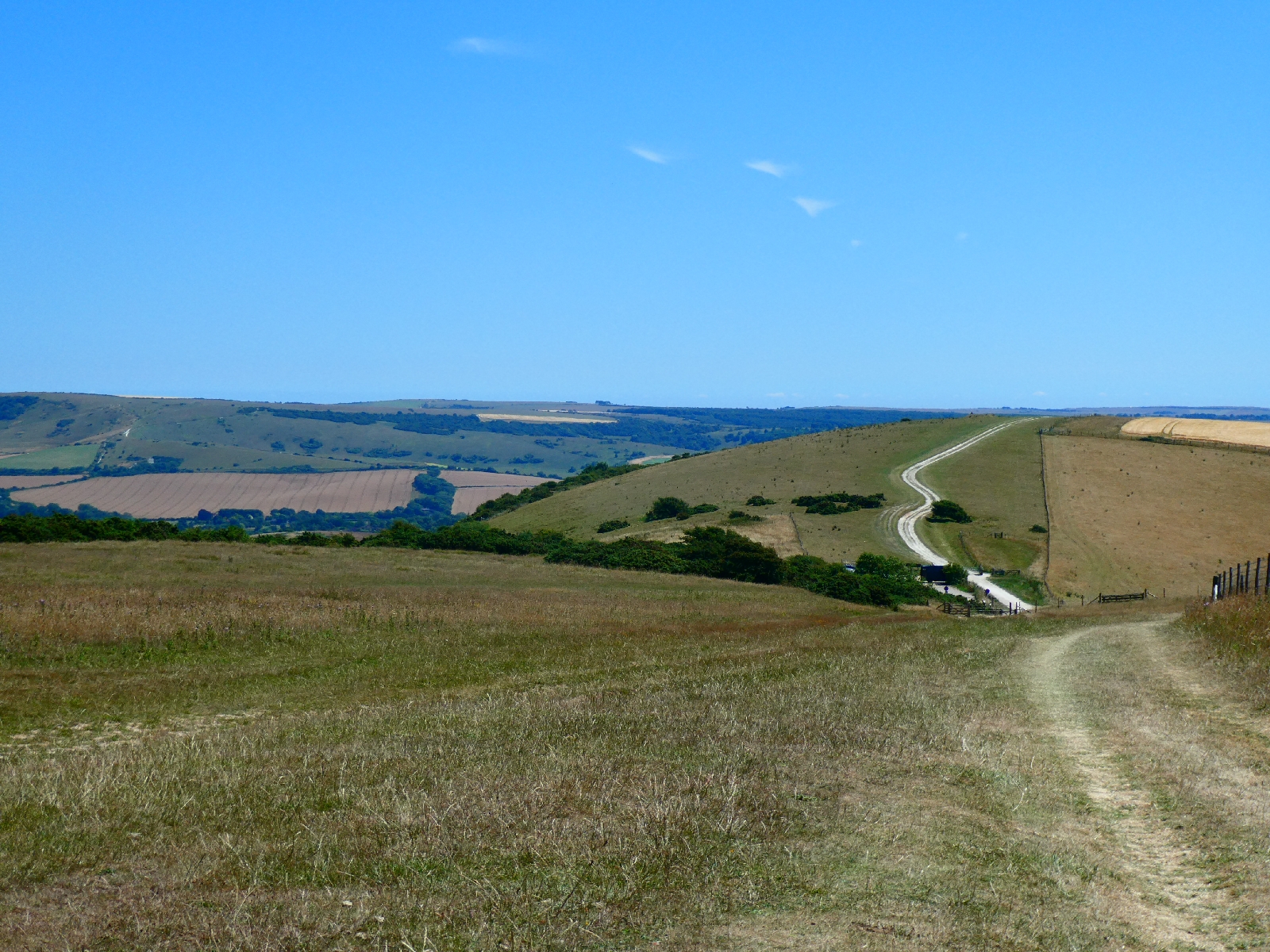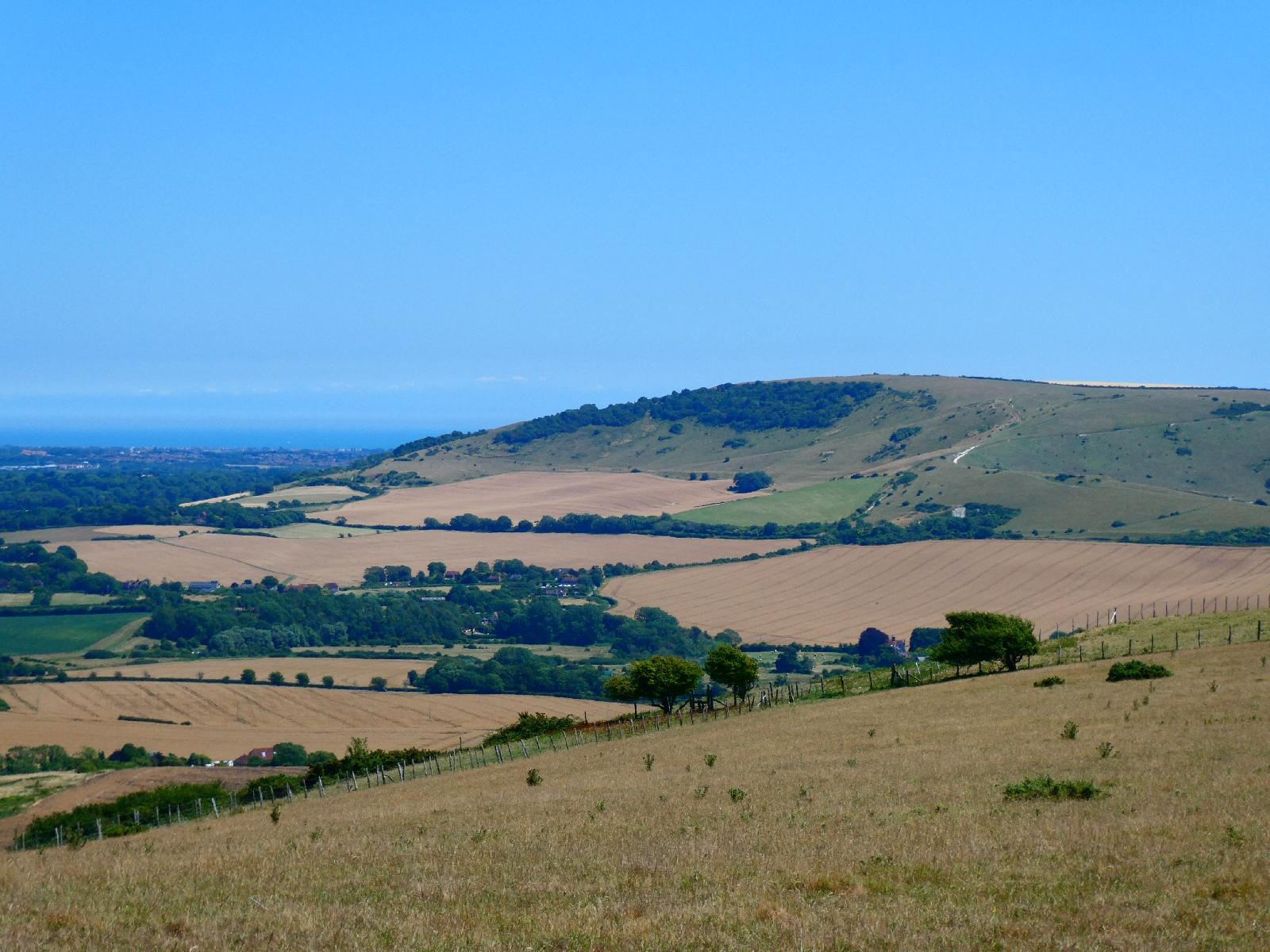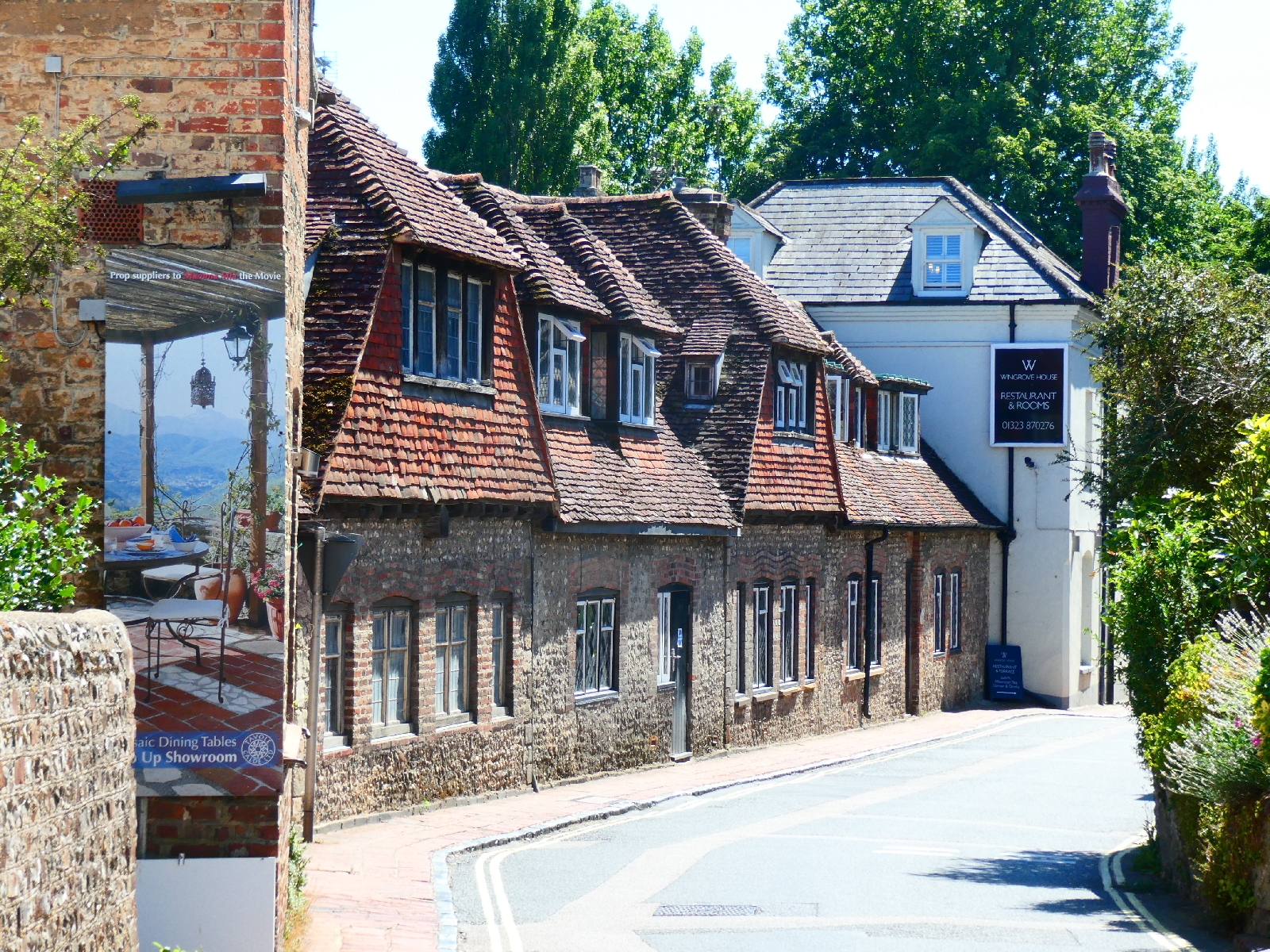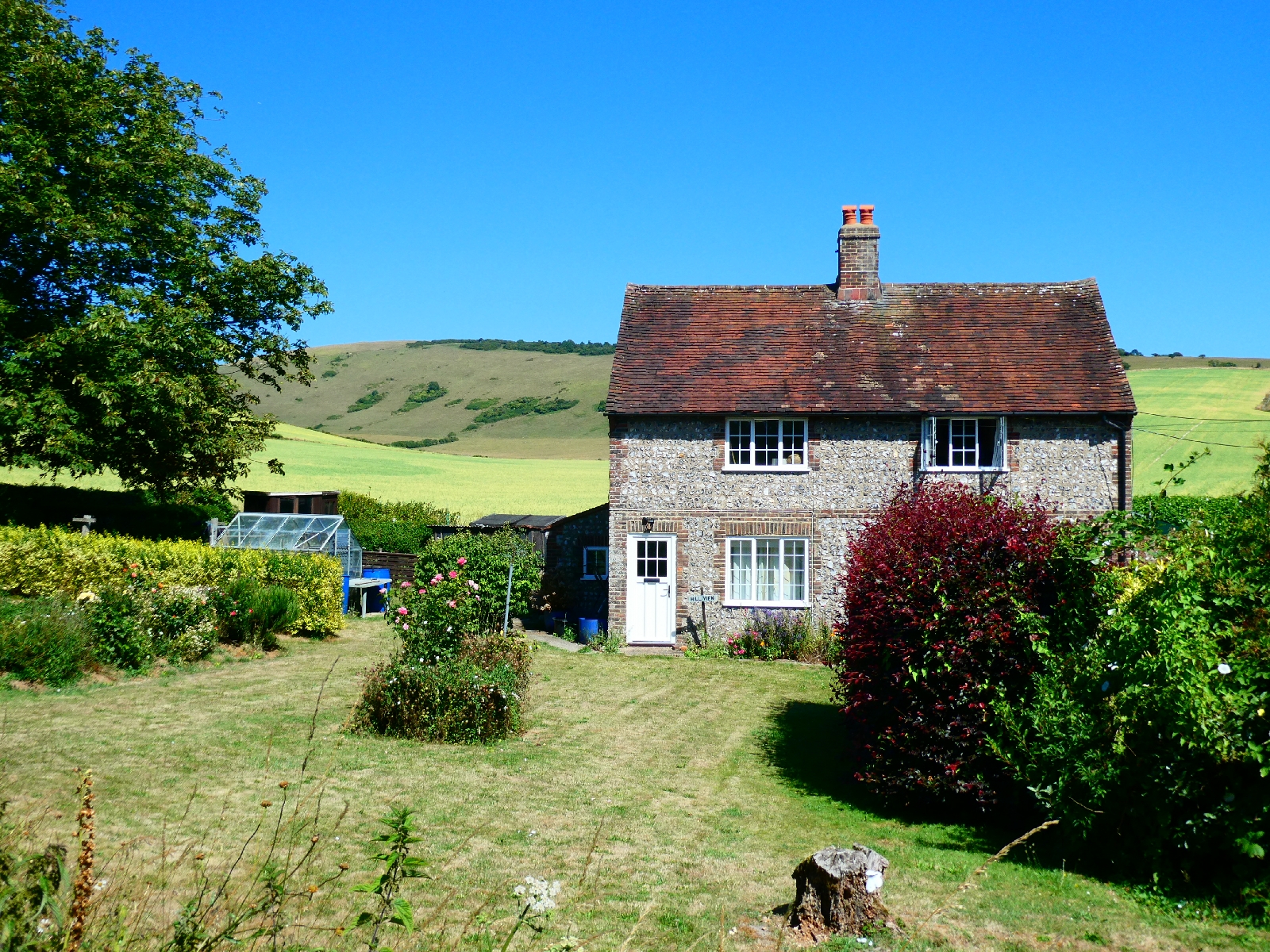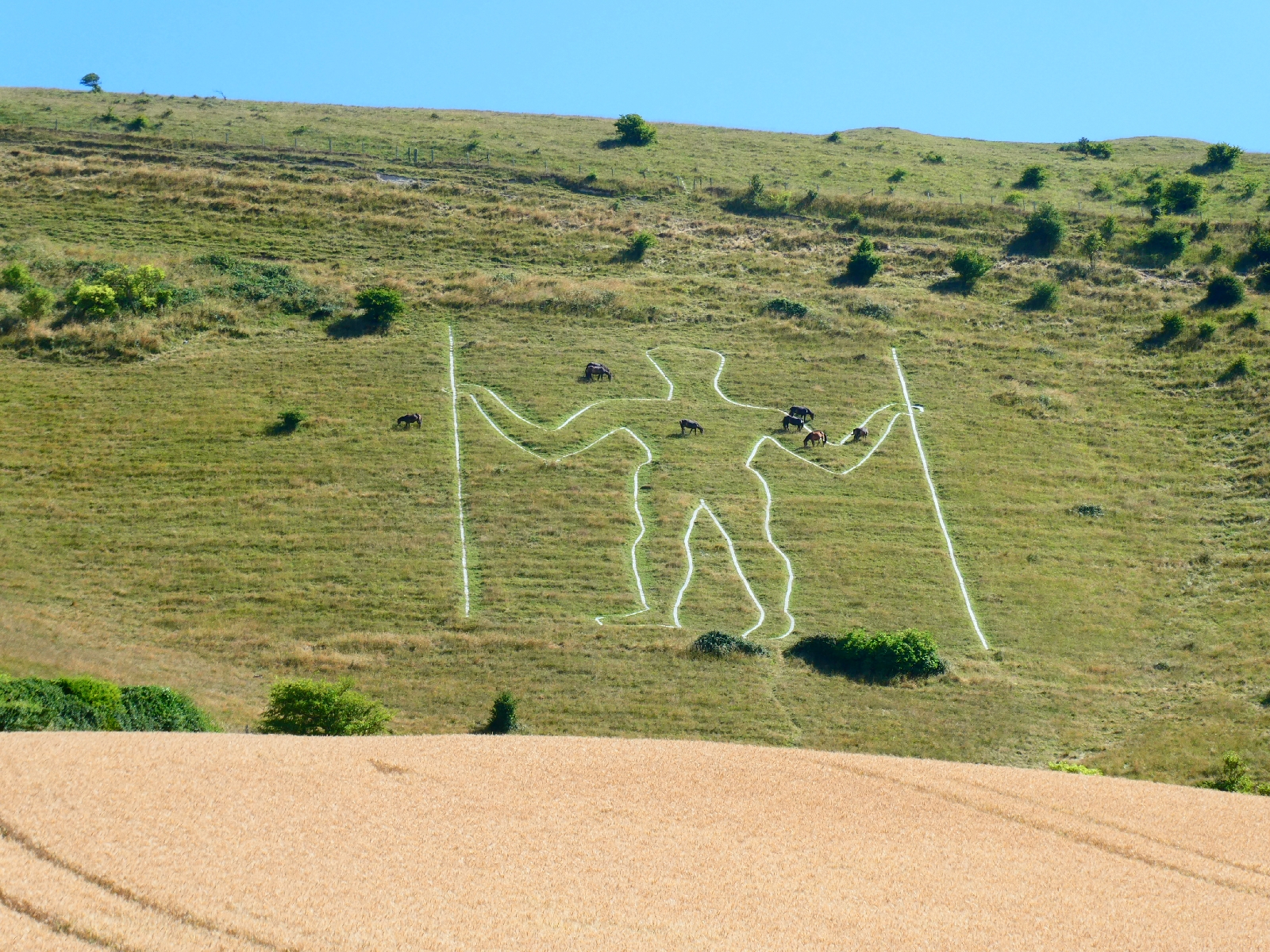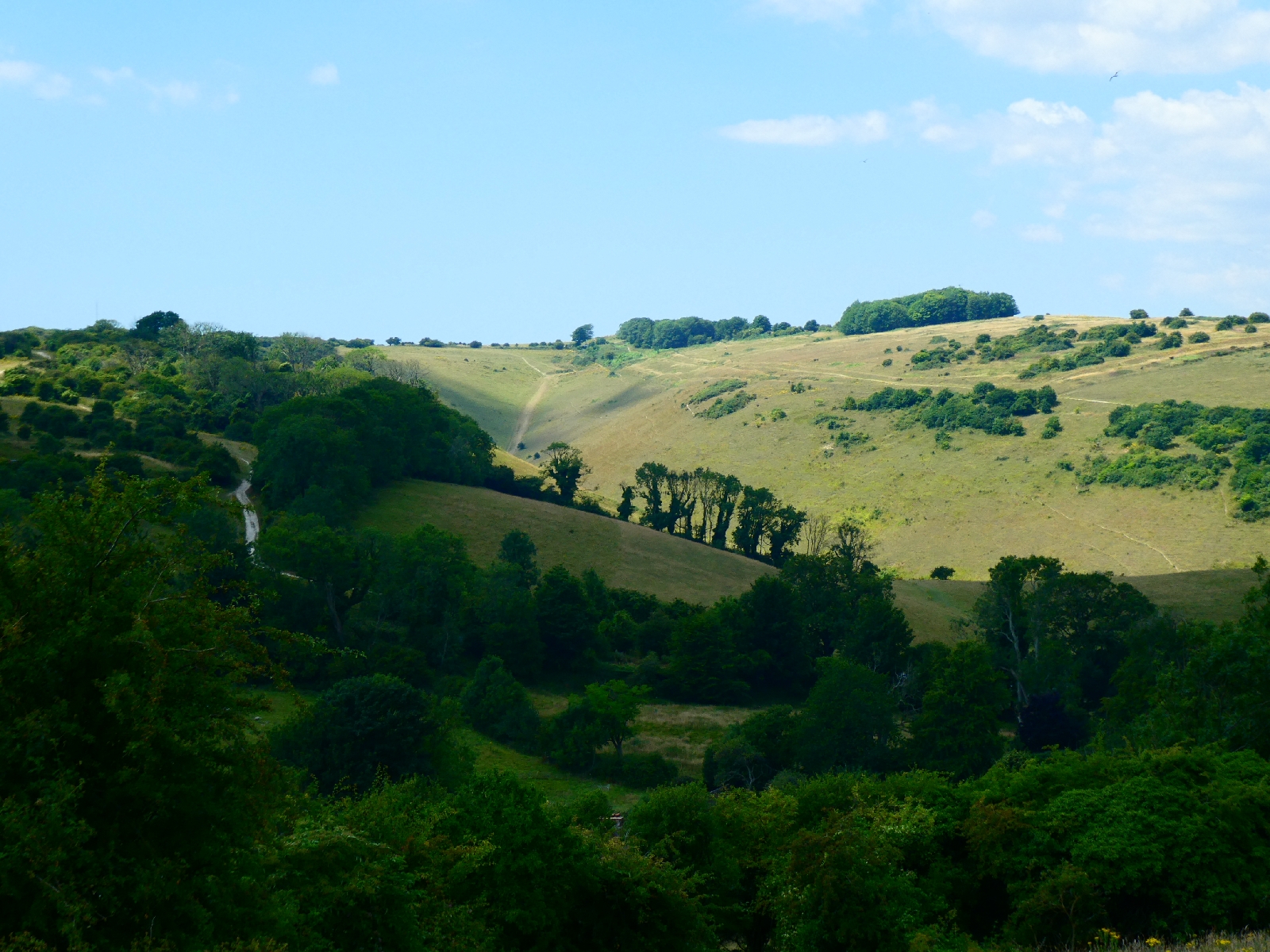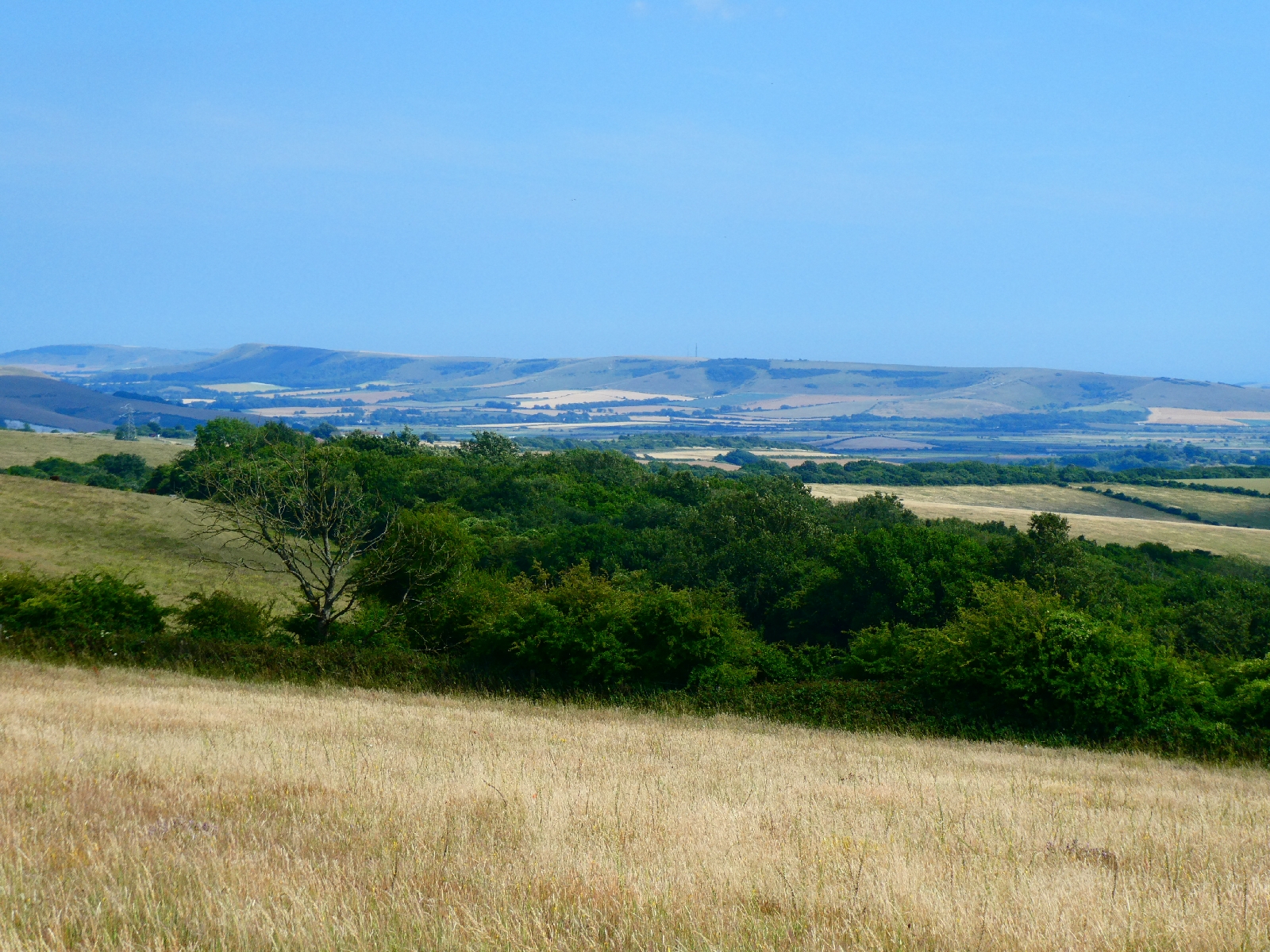I set out from Wilmington early this morning, just after 8.30, thinking that the short but vigorous route for the day might risk slipping behind schedule.
Even at that hour it was very warm and the sky was once again a cloudless deep blue.
I reversed yesterday afternoon's route past the Long Man and Lullington, then continued on the same road to Litlington, with another wooden-spire church, they seem typical of the area.
From here I could have rejoined the South Downs Way, but as it goes up and down two large hills between here and Exceat I stuck with the road. It might wriggle a lot and it seemed overpopulated with Range Rovers, but it was level. It also offered views across the Cuckmere to the white horse carved into the slopes of High and Over, a sharp hill crossed by the road from Alfriston to Seaford.
Exceat has a large car park, a Visitor Centre for the Seven Sisters Country Park, and a café with rooms, which I know from experience charges a small fortune for very little, and is far too trendy even to have a TV in any bedroom.
I rejoined the South Downs Way, which soon begins a climb up Exceat Hill - with a good geography textbook view of the huge meanders in the original course of the Cuckmere.
Then, predictably, downhill again before heading into the real grind, where the path climbs doggedly up to Haven Brow, the first top of the Seven Sisters. There's a fine view back to Cuckmere Haven.
Here begins the traverse of the cliffs known as the Seven Sisters, a much tougher walk than it sounds. I've done it twice before, many years ago, but never with a loaded pack.
The path plunges steeply from each of the tops, only to rise equally steeply to the next one. There really are seven tops, so seven steep climbs. The reward is in the scenery, looking forward to the old lighthouse at Belle Tout, or backwards to the growing number of white chalk cliffs.
Unlike much of the rest of my journey, this section, from Exceat to the end of the Way outside Eastbourne, was today very busy. While it was sunny and clear, a seaside breeze kept it cool, so there was plenty of reason for people to be out enjoying it.
As the Seven Sisters end, the path descends to Birling Gap, normally an unremarkable place with a row of grey cottages, a National Trust café and a car park. Today it was heaving, even tourist coaches were dropping their charges here.
To be fair there's no need to walk far to see a good view of the cliffs, and for those with more energy the path up the next hill to the old Belle Tout lighthouse is clear and not very difficult.
Belle Tout was operational as a lighthouse from 1834 to 1903, unintentionally damaged by Canadian artillery during WW2 and later restored by the local council, which eventually sold it to private owners. In 1999 the whole building was moved 17m inland to prevent cliff erosion from ending its life.
Today there are a few rented rooms, and a café.
Beyond Belle Tout the route takes about a mile to go uphill in three or four stages to the top of Beachy Head, with another car park and café.
The classic image of the red and white lighthouse, also no longer in operation, at the foot of tumbling chalk cliffs can only be found by going a little close to the cliff edge - easy today, but tricky in a high wind.
There are multiple paths east of the top, towards Eastbourne, but hardly any signage, so it took some effort to find the right one. This final stage of the South Downs Way goes down gently, but then very steeply to the kiosk at Holywell, and a large board announcing the trail.
From here to Eastbourne pier, which I'd chosen to mark the end of my route, is a long mile and more down to and then along the Promenade, today really crowded.
Relaxed at completing what I'd set out to do I spent a while finding something for a rather late lunch, then took the train back to London and home.










